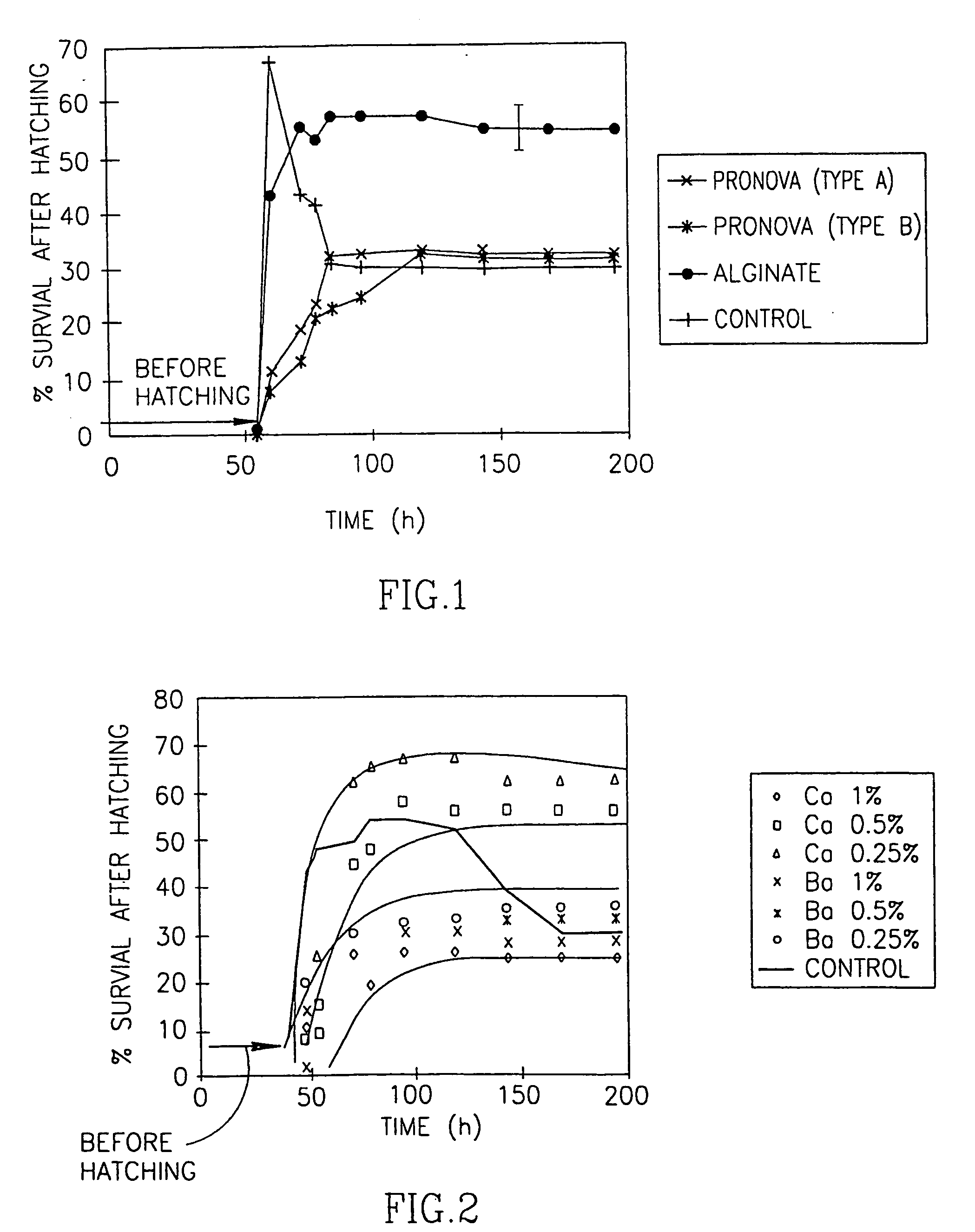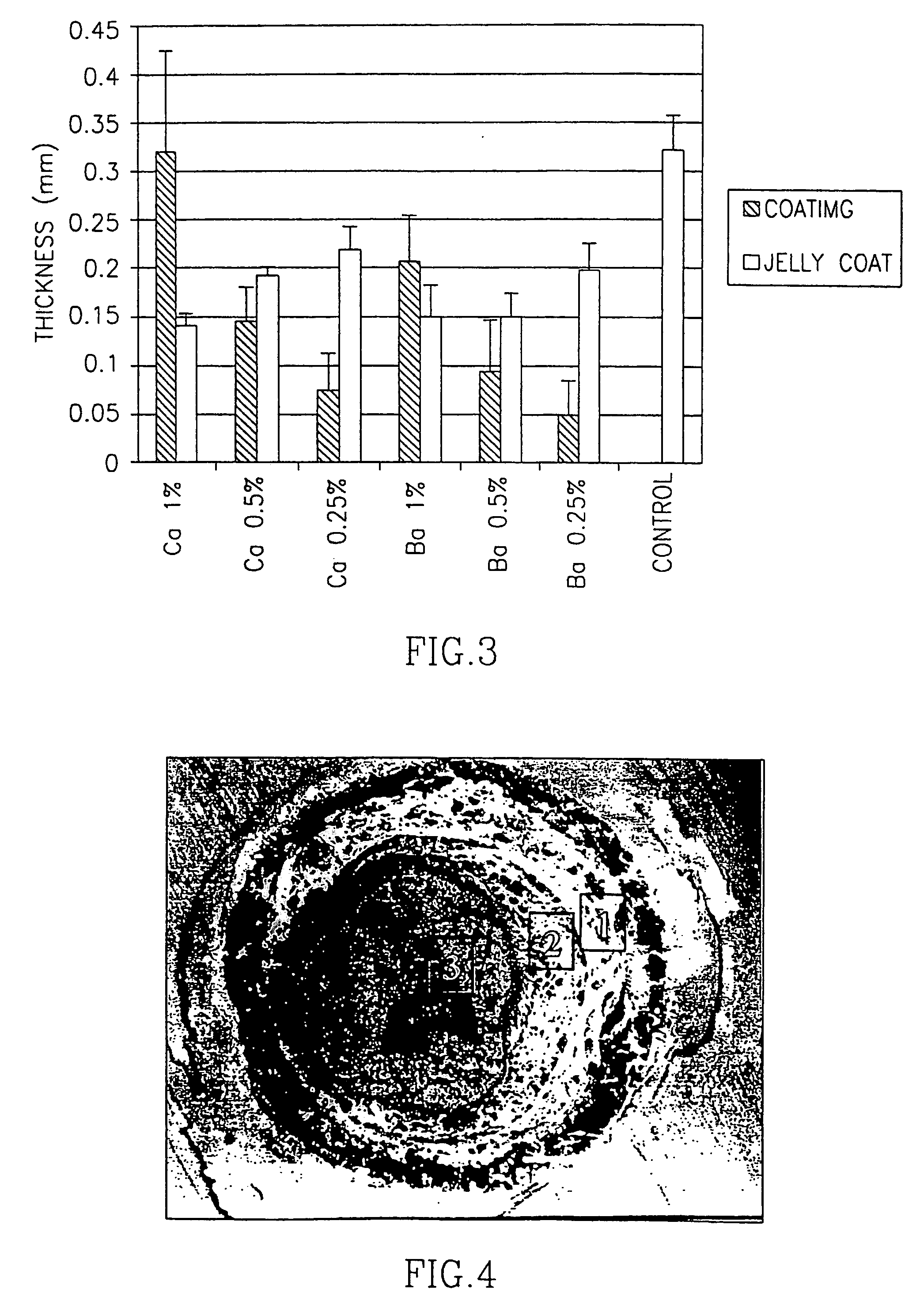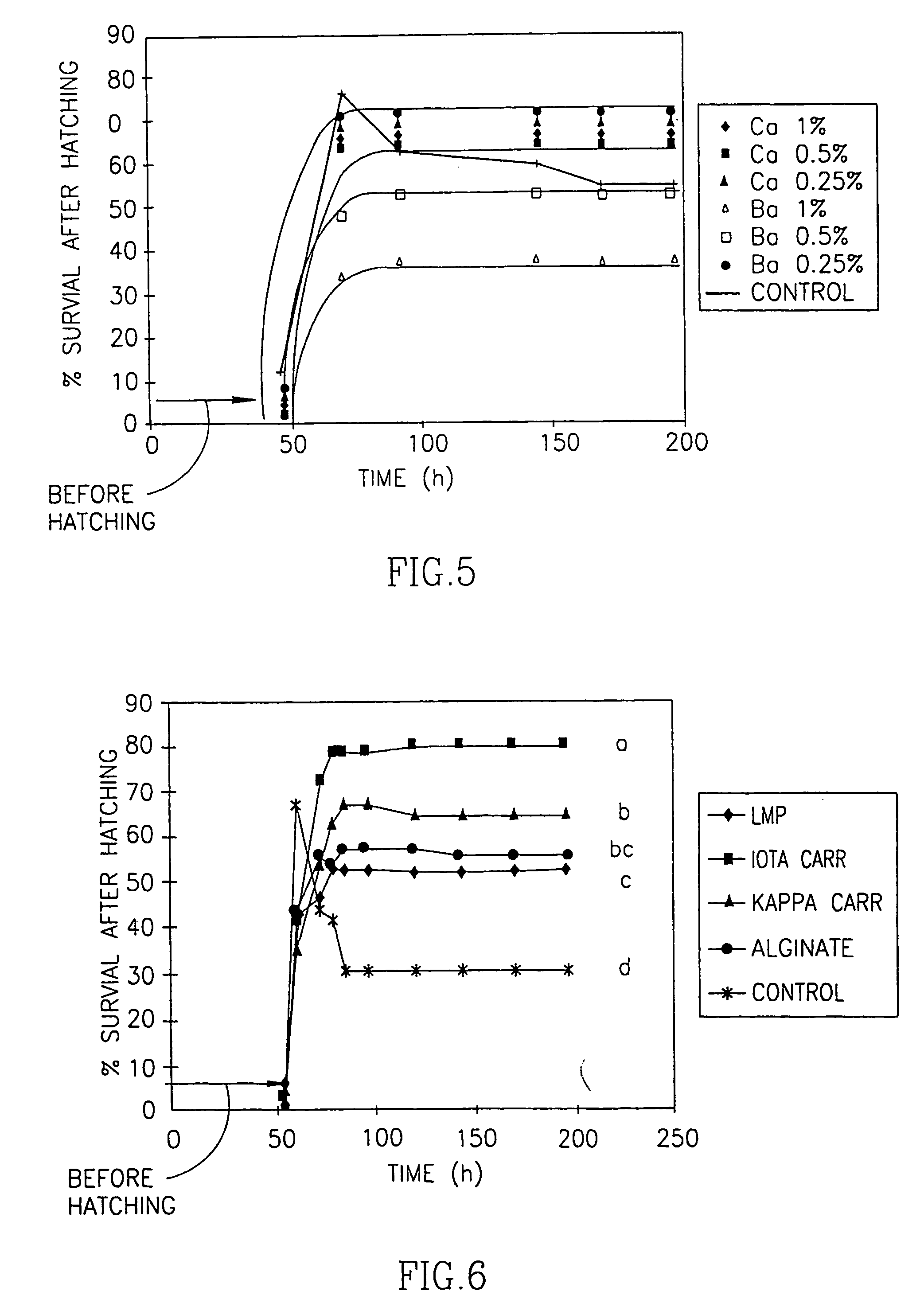Hydrocolloid coating of a single cell or embryo
- Summary
- Abstract
- Description
- Claims
- Application Information
AI Technical Summary
Benefits of technology
Problems solved by technology
Method used
Image
Examples
example 1
The Adhesion Properties of X. laevis Eggs and Embryos to Different Substrates
[0081] The adhesion properties of Xenopus laevis eggs and embryos to various surfaces (substrates) were determined in different experimental set-ups. They were divided into experiments conducted on nonfertilized and fertilized eggs (embryos). The nonfertilized eggs were examined immediately after ovulation of the eggs, after swelling of the jelly coat, and after different periods of time has elapsed from the moment of adhesion. For the fertilized eggs, adhesion was examined after swelling of the jelly coat and 1 h after fertilization.
[0082] The roughness of the five hydrocolloid-gel systems (agarose, agar, alginate, κ-carrageenan, and gelatin) could be estimated by atomic force microscopy, gloss measurement, or by sensory evaluation as highly smooth surfaces. It is important to note that these hydrocolloids differ in their compositions, structure, and overall properties (Nussinovitch, 1997, Hydrocolloid A...
example 2
Hydrocolloid Coating of X. laevis Eggs Embryos
[0090] In a first set of experiments, X. laevis fertilized eggs were coated with three different types of alginate. The properties of these alginates are summarized in Table 1: they differed with respect to their molecular weights, viscosities, gel strengths and the content ratios of guluronic (G) to mannuronic (M) acid. The molecular weight, and the proportion and arrangement of M and G are expected to affect a particular alginate's behavior. The percentage of M in the alginates used for coating ranged from 29 to 35 in the alginates extracted from Laminaria hyperborea, to 61 in the alginate extracted from Macrocystic pyrifera. Each egg was covered with a thin layer of calcium- or barium- alginate gel.
TABLE 1Alginate Compositions (provided by the manufacturers)CompanyProduct NameOriginMolecular WeightViscosityGel Strength% Dry SolidsG:M RatioSigma ChemicalAlginic AcidMacrocystic Pyrifera60,000-70,00022% (cP) at aNot detected8839:61Co....
example 3
The Survival Percentage of Coated and Non-Coated X. laevis Embryos
[0093] The survival of embryos vs. time under storage conditions #1 is shown in FIG. 1. The survival percentage is equivalent to the accumulated number of hatching embryos to a maximal or asymptotic survival value, and is the number of embryos left after they begin to die. The accumulated survival percentage of non-coated embryos was 4.6, 54 hours after fertilization, increasing to 66 after 60 hours (FIG. 1). Percent survival then decreased to 41 after 78 hours and reached an asymptotic value of 30 between 84 and 196 hours. Reduced survival percentages could be due to the secretion of nitrates or other substances into the medium by the developing embryos. In parallel to the survival-prospects study, embryo developmental stages were monitored (observed through a binocular lens) and compared to that of non-coated embryos (Nieuwkoop and Farber, 1994). No difference between the two was observed, implying that the coating...
PUM
 Login to View More
Login to View More Abstract
Description
Claims
Application Information
 Login to View More
Login to View More - R&D
- Intellectual Property
- Life Sciences
- Materials
- Tech Scout
- Unparalleled Data Quality
- Higher Quality Content
- 60% Fewer Hallucinations
Browse by: Latest US Patents, China's latest patents, Technical Efficacy Thesaurus, Application Domain, Technology Topic, Popular Technical Reports.
© 2025 PatSnap. All rights reserved.Legal|Privacy policy|Modern Slavery Act Transparency Statement|Sitemap|About US| Contact US: help@patsnap.com



